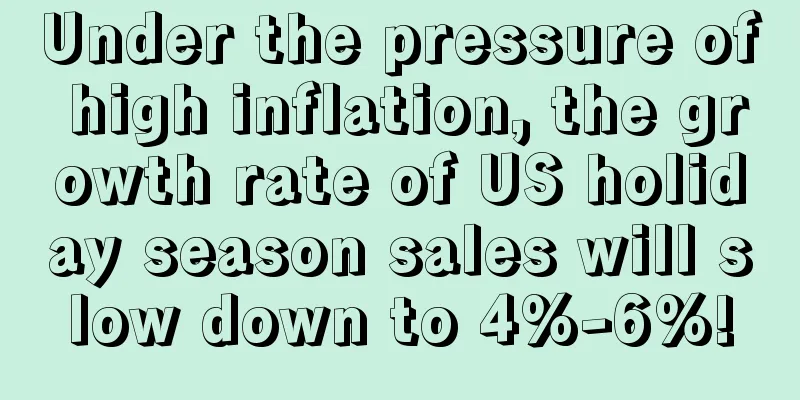U.S. e-commerce returns have surged since the pandemic, and may see a downward inflection point this year

|
According to the latest report from eMarketer, since the outbreak of the COVID-19 pandemic, online shopping in the United States has increased and retailers have implemented free returns, driving a surge in e-commerce returns. In 2020, the volume of e-commerce returns in the United States more than doubled and increased by 24.7% in 2021. However, since the start of 2022, U.S. e-commerce returns have fallen 2.5% while total e-commerce sales have increased 9.6%, which may mark a turning point. eMarketer predicts that the growth of e-commerce returns will slow down starting in 2023, but the volume of e-commerce returns in the United States will be higher than before the pandemic until at least 2026. The study noted that retailers are improving online product information and the emergence of technologies such as augmented reality will help reduce returns. At the same time, consumers are gradually returning to in-store shopping, which is helping to slow the growth of online returns. Online channels are increasing their share of U.S. retail returns As e-commerce sales increase their share of the U.S. retail market, e-commerce returns will also increase their share of retail returns. Currently, e-commerce sales account for only about 15% of total retail sales in the United States, but more than one-third of retail returns in the United States come from e-commerce sales. It is estimated that the total amount of retail returns in the United States will reach 627.34 billion US dollars in 2023, equivalent to 8.5% of total annual sales. At the same time, the transfer of high-return products such as fashion products to online sales will further increase the return rate of e-commerce. In 2022, more than 33% of clothing and accessories sales will come from e-commerce channels, and this proportion is expected to rise to 46.3% by 2026. Regarding the number of people returning e-commerce purchases, eMarketer data shows that this number increased by more than 9% year-on-year in 2020 to 105.7 million. By 2026, this number is expected to slowly grow to around 113 million. Editor✎ Ashley/ Disclaimer: This article is copyrighted and may not be reproduced without permission. |
Recommend
Don’t let DeepSeek be your translator! Use DeepSeek to analyze advertising data and you will have a different way of thinking.
Loyxu2021 My C position Big monkey, I haven't ...
What is OpenSky? OpenSky Review
OpenSky is a website where bloggers sell things th...
What is the National Tax Authority (NBR)? Review of the National Tax Authority (NBR)
The National Bureau for Revenue (NBR) of Bahrain w...
What is M6go? M6go Review
M6go is a global trading company. Through cooperat...
What is ShelfTrend? ShelfTrend Review
ShelfTrend allows you to search real-time market d...
Here are the 10 best-selling products under $30 on Amazon
<span data-shimo-docs="[[20,"俗话说:“做亚马逊,七分靠...
"The Art of War" is a bestseller overseas! Has "Kuang Biao" become an overseas sales expert?
On the evening of February 1, the hit drama "...
What is Global Easy Shopping? Global Easy Shopping Review
Global E-Commerce was founded in 2007, focusing on...
Microsoft successfully joined the group chat! Entering the e-commerce field through Bing to compete with Google Shopping!
<span data-shimo-docs="[[20,"微软通过Bing进军电商领...
Amazon Kitchen Product Planning
Kitchen Category Analysis Product Planning Exampl...
Amazon expands into physical retail! Or will open a physical department store
It is learned that according to foreign media repo...
Nearly 4 million stolen! Amazon's insider was found, and sellers suffered heavy losses!
For Amazon sellers, goods are their lifeblood, but...
What is Chinabrand.com? Chinabrand.com Review
Chinabrands, also known as Global China Products N...
What is FTW1? FTW1 Review
FTW1 warehouse is a new warehouse for Amazon FBA f...
What is a logistics bus? Logistics bus review
Logistics Bus (www.5684.cn) is the first internati...









